Battersea Dogs & Cats Home is one of the oldest, and best known animal rescue centres in the country. Members of the public can now visit the centre by booking a guided tour. The tours provide information about animal adoption, and allow visitors to see how the dogs are trained and cared for at the home. This post is my review of the Battersea Dogs Home tour.

Battersea Dogs Home Tour Review
History of Battersea Dogs & Cats Home and their Tours
Battersea Dogs & Cats Home was founded in 1860, by the English animal welfare campaigner, Mary Tealby. When the home first opened, it was known as The Temporary Home for Lost and Starving Dogs, and took in vulnerable animals in Holloway, north London.
The first celebrity supporter of the rescue centre was Charles Dickens, who, two years after the home opened, wrote an article about it in his newspaper. He referred to it as an “extraordinary monument of the remarkable affection with which the English people regard the race of dogs”.
In 1871, the home moved to Battersea, and changed its name to Battersea Dogs Home. It didn’t start taking in cats until 1883, but remained known as Battersea Dogs Home until 2002, when it changed its name to Battersea Dogs & Cats Home.
The current tours of the rescue centre started following the popular TV series, Paul O’Grady: For the Love of Dogs, which has been filmed at Battersea Dogs & Cats Home since 2012.
My Experience of the Battersea Dogs Home Tour
When I first arrived for the tour, it wasn’t clear where to find the reception. I have included photographs below to help anyone else who has a tour booked, to find the starting point.
Battersea Dogs & Cats Home has a tearoom called Tealby’s, which is just before the railway bridge. To get the to reception you need to walk past the tearoom, and all the way to the end. The main entrance, and pathway leading to the reception are shown in the photographs below.
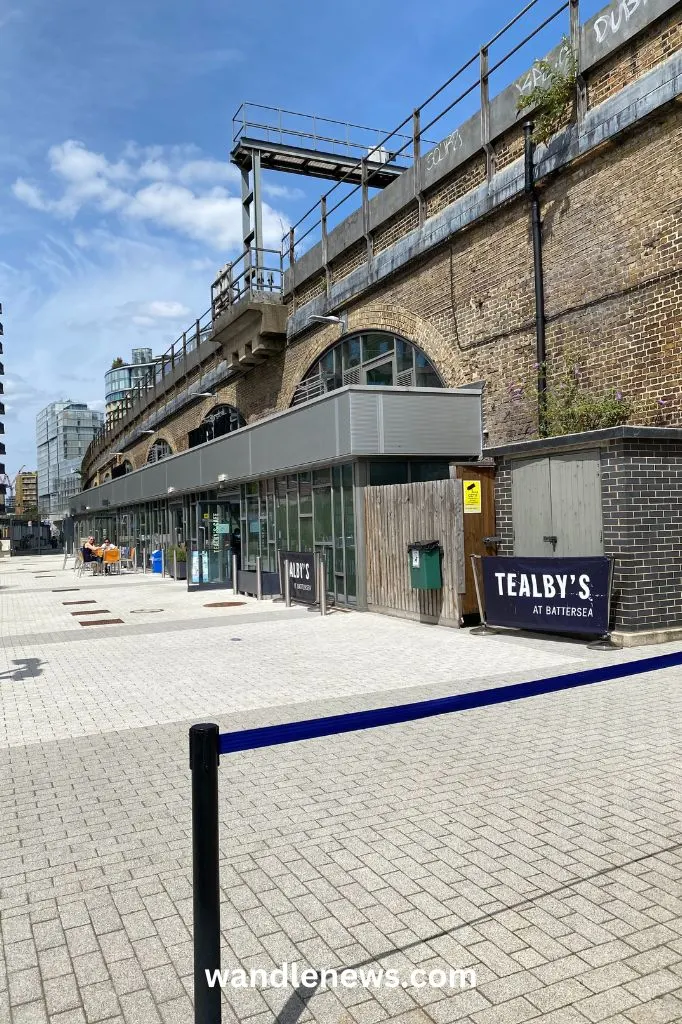

The starting point for the tour is the reception, which is also the gift shop. Once the tour began, we were first taken to an indoor arena to see how the dogs are trained.
How the Dogs are Trained
In the first part of the tour we met two dogs at the in the arena, where we saw the equipment and toys that were used to train them.
The black dog in the first photograph below, was a former racing greyhound called Tyson. Tyson was four years old, and needed to wear a muzzle because, as he was an ex racing dog, he had been trained to chase. This could be a problem for a future owner because he may try to chase a squirrel in a park, or a neighbour’s cat.
The staff at the centre showed us how they train the dogs and teach them to keep their paws on the ground, and that their teeth should only ever be on toys, and never humans.

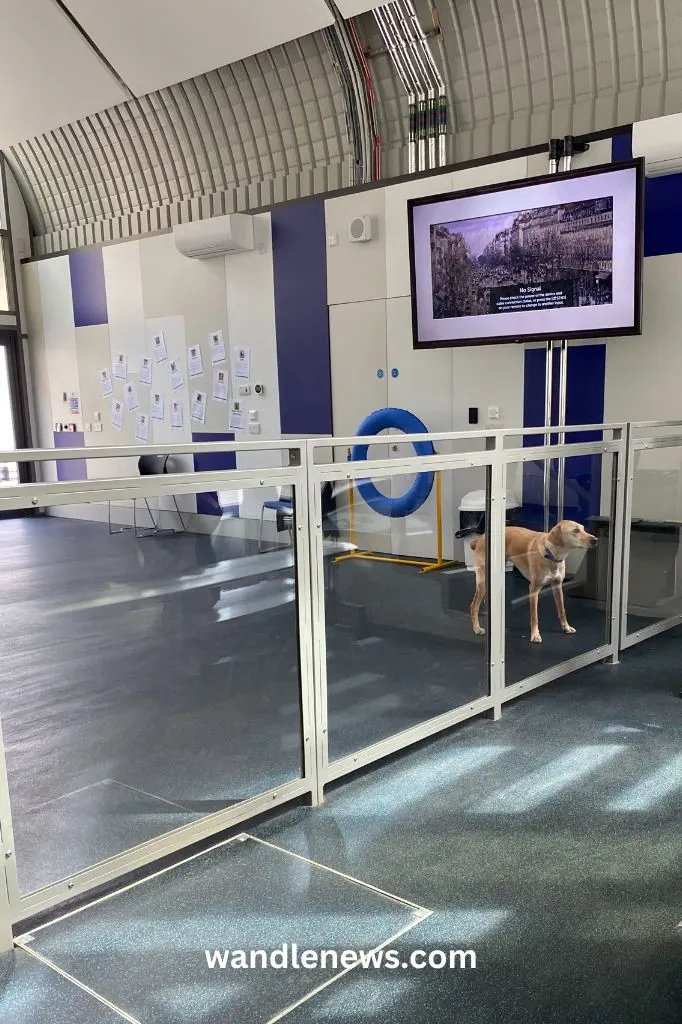
Tour of the Site
After we left the arena, we had a short tour of the site. We saw the car park where the dogs and cats arrive. When a new animal arrives, it is taken into a building where it is checked for medical problems and behavioural issues. This area is shown in the photograph below.

Some of the animals are gifted to the centre, but they also receive lots of strays. If the dogs and cats are gifted then they are able to receive some kind of behavioural history, like how they are around children, but for the stray animals this is unknown.
Each dog that arrives gets put into a dedicated block, and a team ensures that it gets the right food and exercise. There is a training area, where the dogs get taught basic skills, like to sit. If the dog has no behavioural issues, then it gets sent straight to the paddocks where they have off lead interactions, and get ready to be re-homed.


At the time when I visited they had 112 dogs and 116 cats at the site in Battersea. Battersea Dogs & Cats Home also has sites in the countryside where they can send dogs that are particularly sound sensitive.
The average length of stay for a dog is 50 days, and the average length of stay for a cat is 30 days. These time frames can vary depending on the state of the animal. For example, some dogs stay longer for medical reasons. There is no time limit on how long an animal can stay.
There is a fostering team at the centre. These are volunteers who take the dogs home, and bring them back once or twice a week while they are having medical treatment. There is also a vet on site (shown in the first photograph below), and all pets are neutered before they are re-homed.


The veterinary clinic is in a separate building, next to the railway arches. There are four “recovery arches” where the animals go to recover after having a procedure. This is also where they go if they are pregnant. You can see the arches on the left hand side in the photograph below.

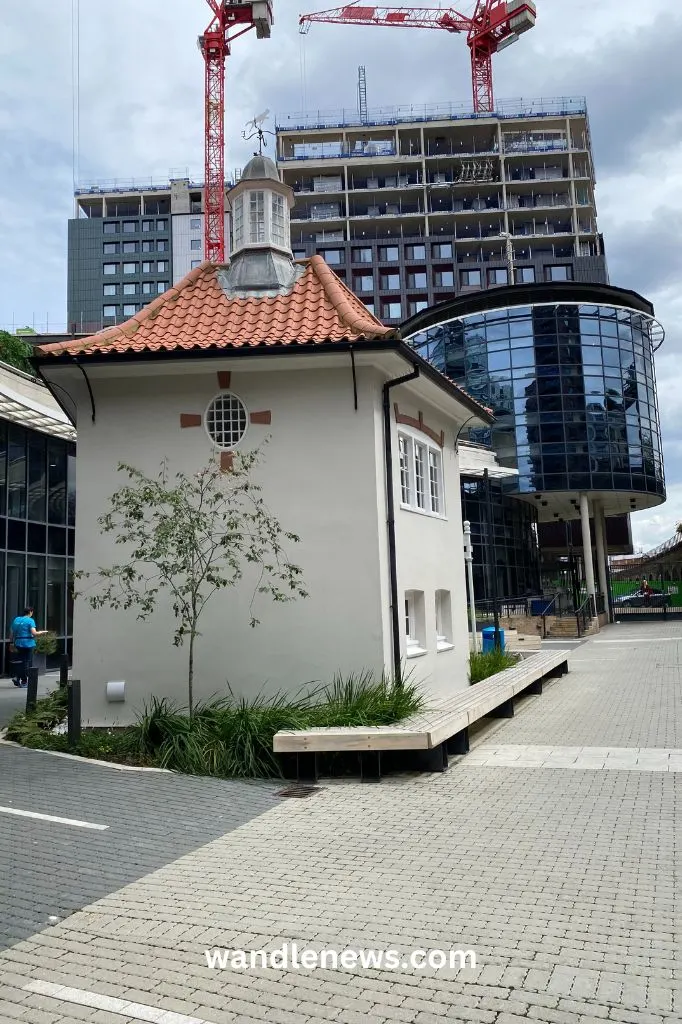
Public Kennels
After a tour of the site, we then went to the public kennels. This is where the dogs go when they are waiting for their forever home. The dogs with red leads are still recovering from kennel cough, but if the dog is wearing a green lead, this means it has recovered.
At the moment the Staffordshire Bull Terrier is the most common breed of dog given to Battersea. This is because they are often bought by young people as “status dogs“, when they have no knowledge on how to look after them.
Below are photographs of some of the dogs I saw who were waiting to be adopted.



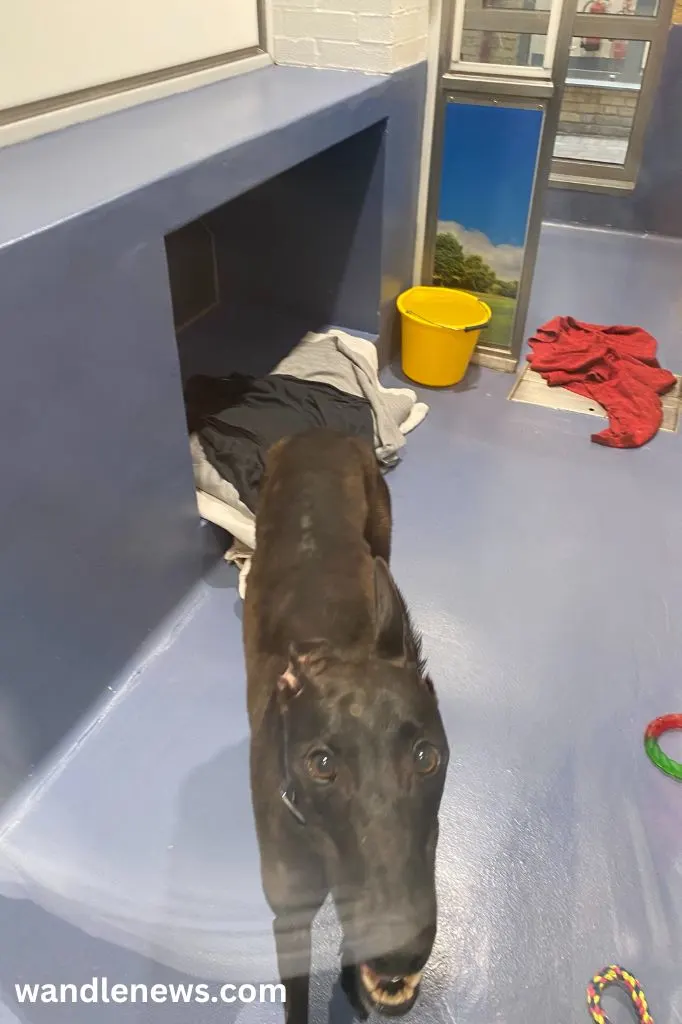
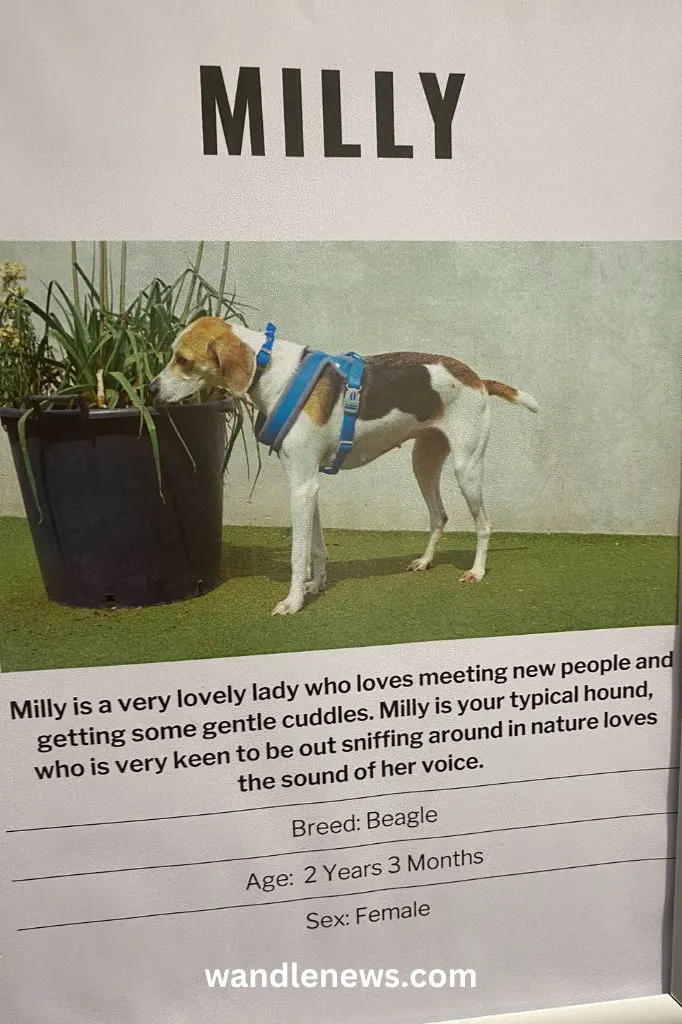
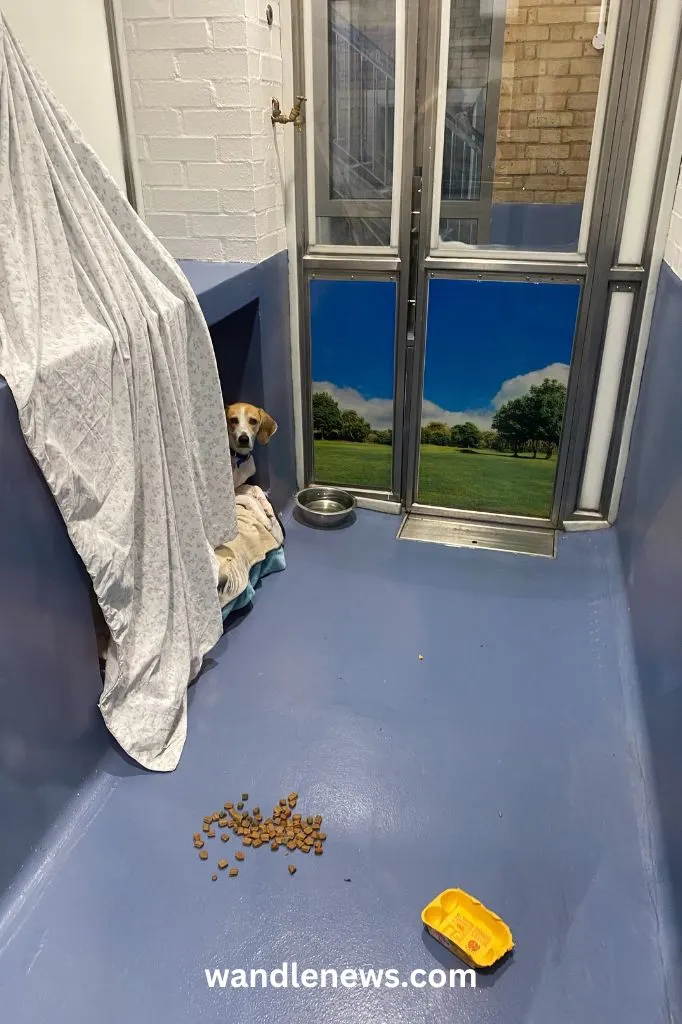
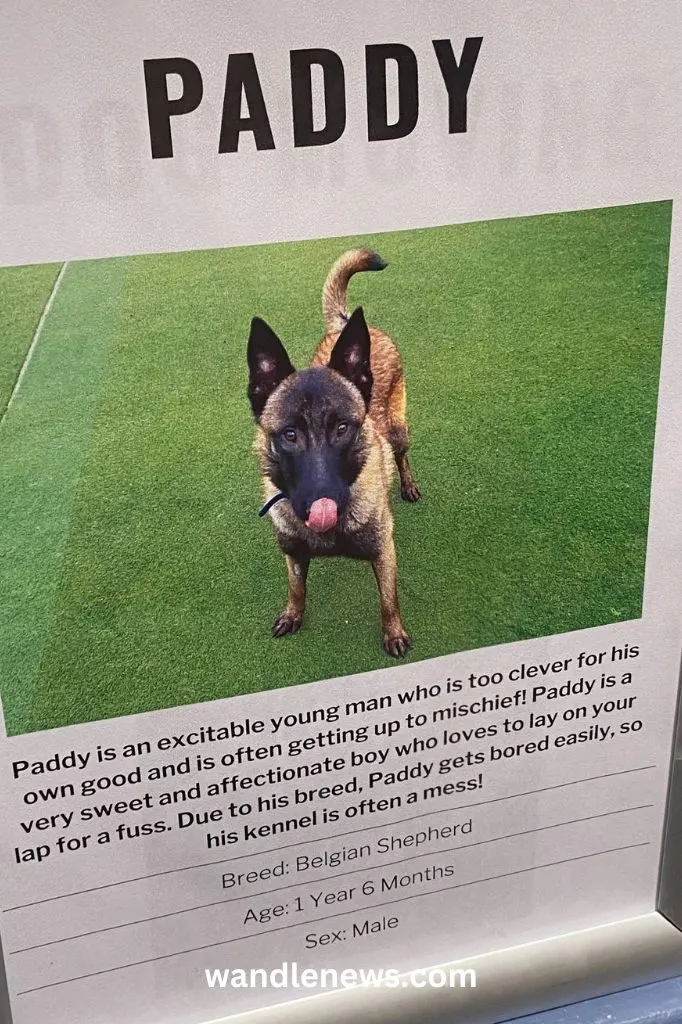
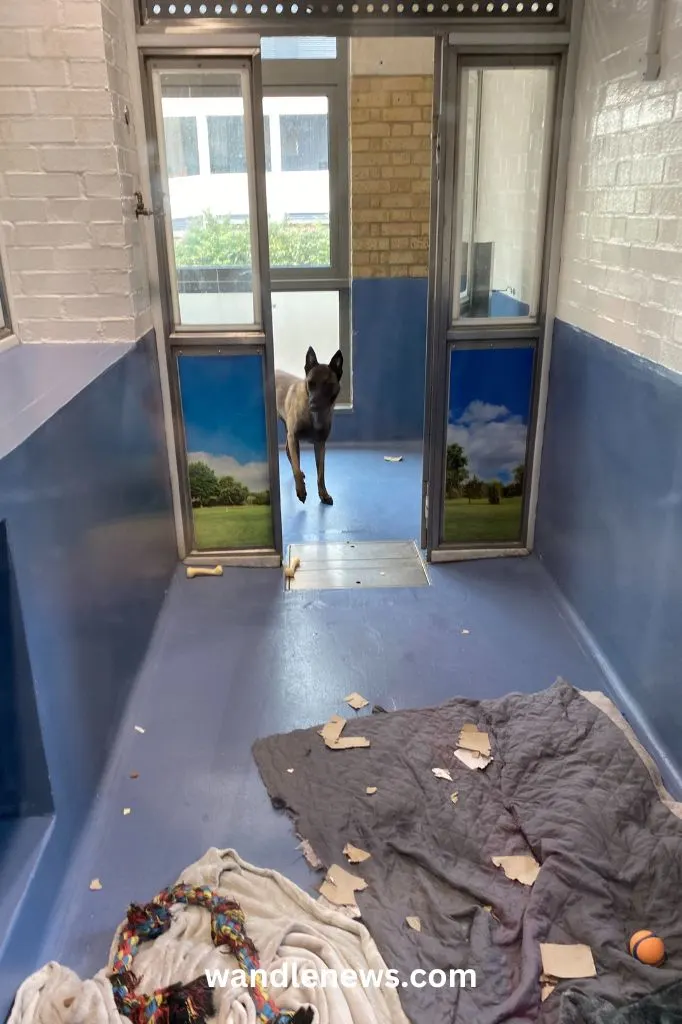
Meeting One of the Dogs
After leaving the public kennels, we went back to the indoor arena where we were able to meet one of the dogs and play with him. This is the point in the tour where you are able to get a photograph with one of the dogs. The dog we met was a Whippet, and is shown in the photograph below.
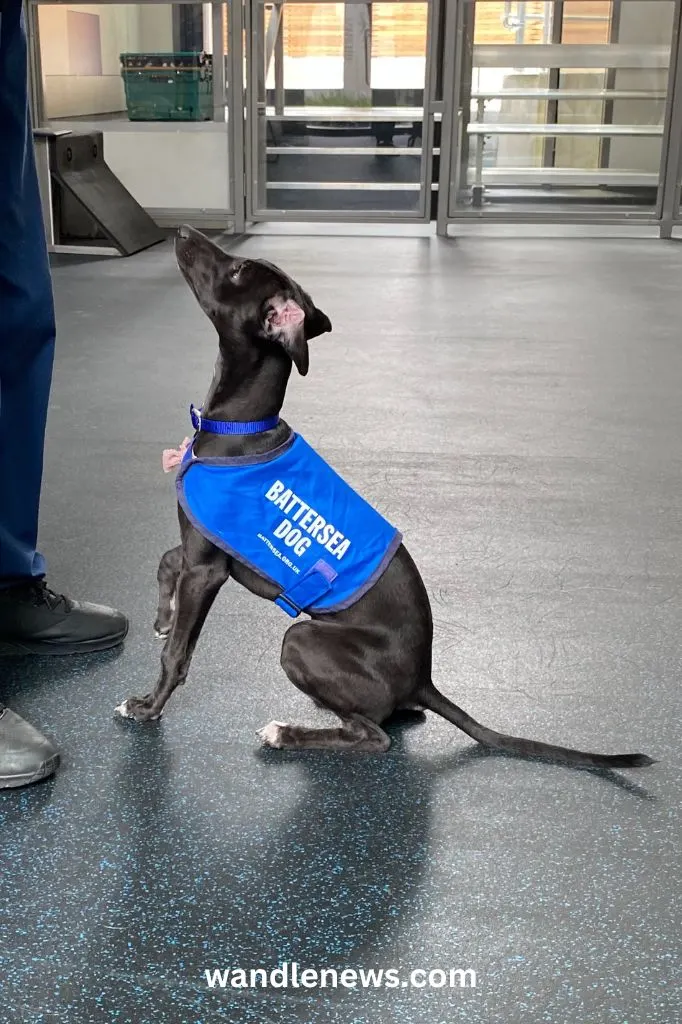
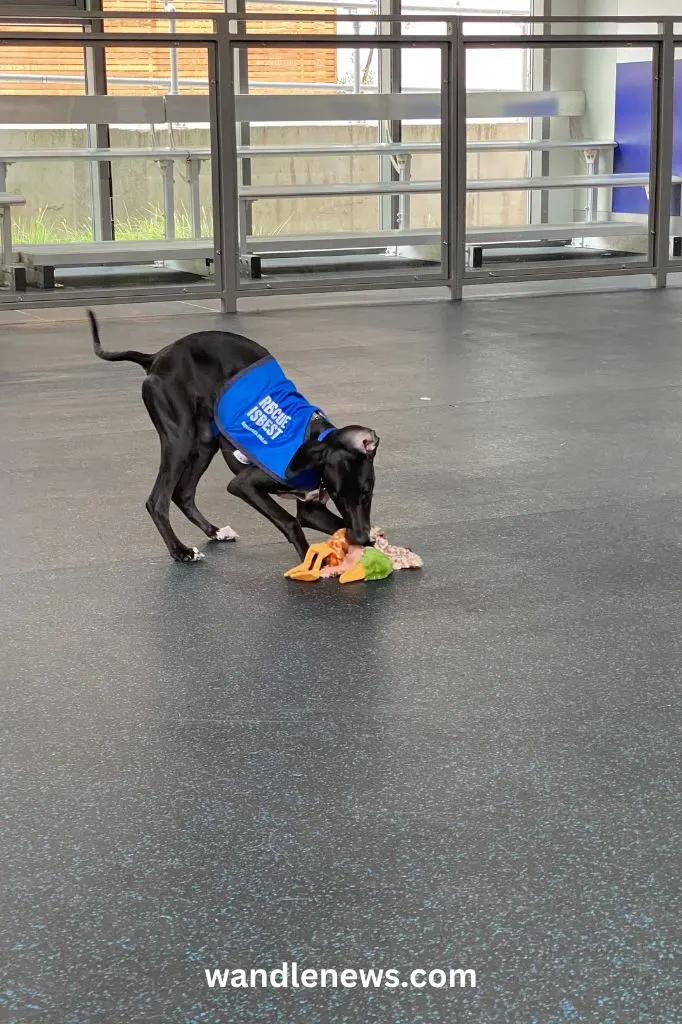
At the time I was there, there was a dog having a hydrotherapy session in the pool next to the arena. The pool is the only facility that is open externally, so you are able to bring your dog if your vet does a referral. Cats also sometimes come for the hydrotherapy sessions.
The Cattery
Unfortunately on the day I visited, the cats home was closed for refurbishment, so we were not able to meet any of the cats, but we saw the building where they live.
The cattery has 100 pens, and usually 70-80 cats on site at one time. The centre has an intake and re-homing team who look after the cats until they are ready to go to a loving home.
The photographs below show the entrance to the cattery.
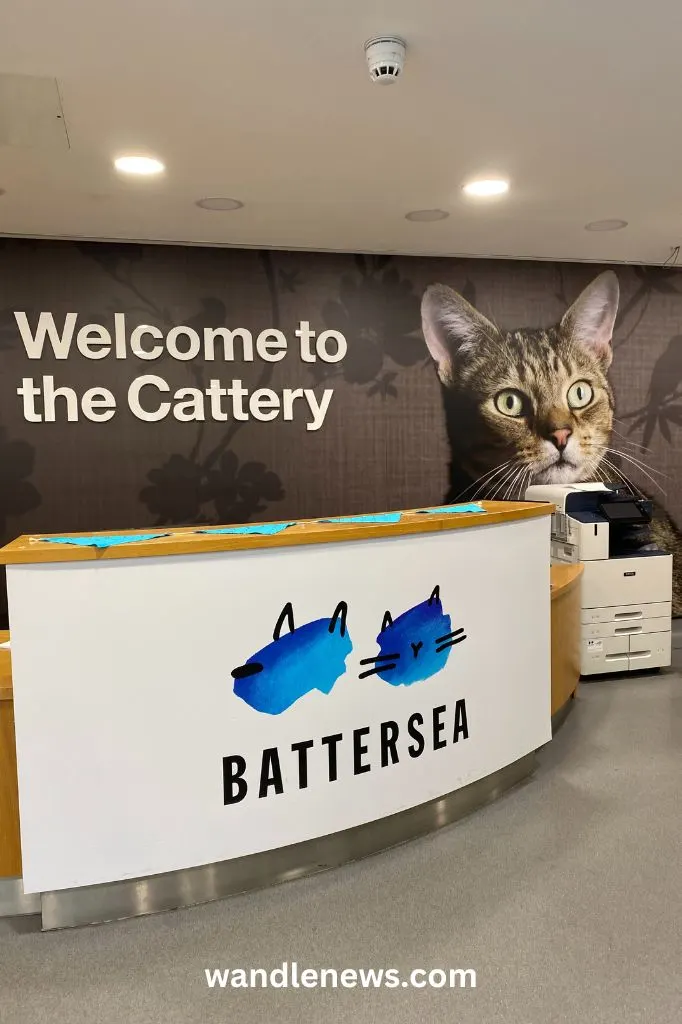
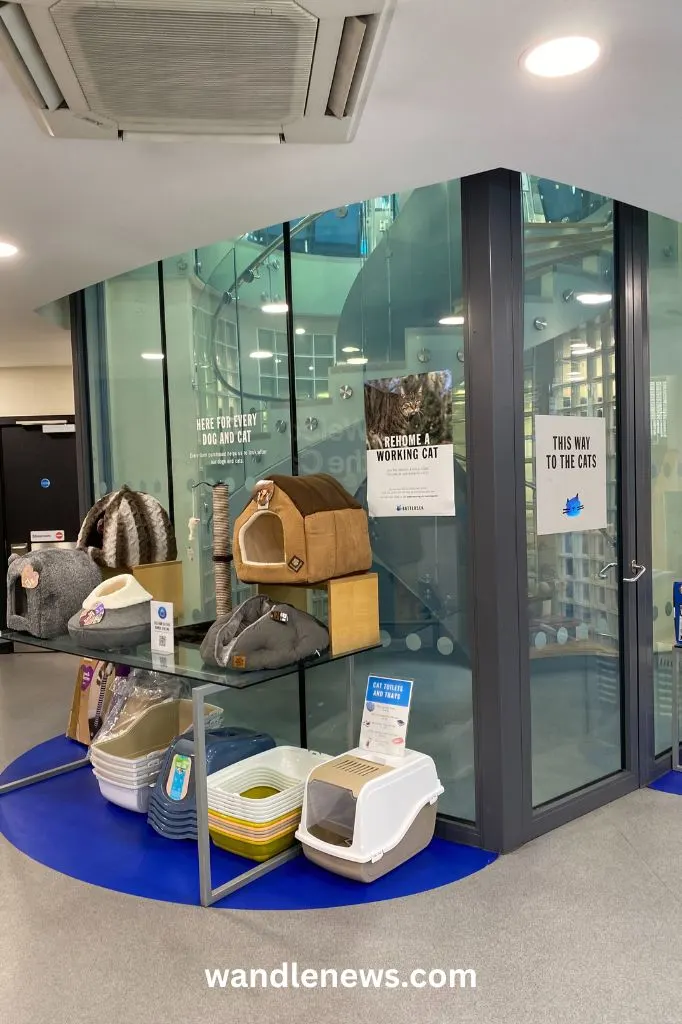
When a cat arrives at Battersea, it is given a blanket and a knitted mouse. The mice are all knitted by volunteers and given to the home. Anyone on the tour who had a cat at home was invited to take a knitted mouse for their own cat.
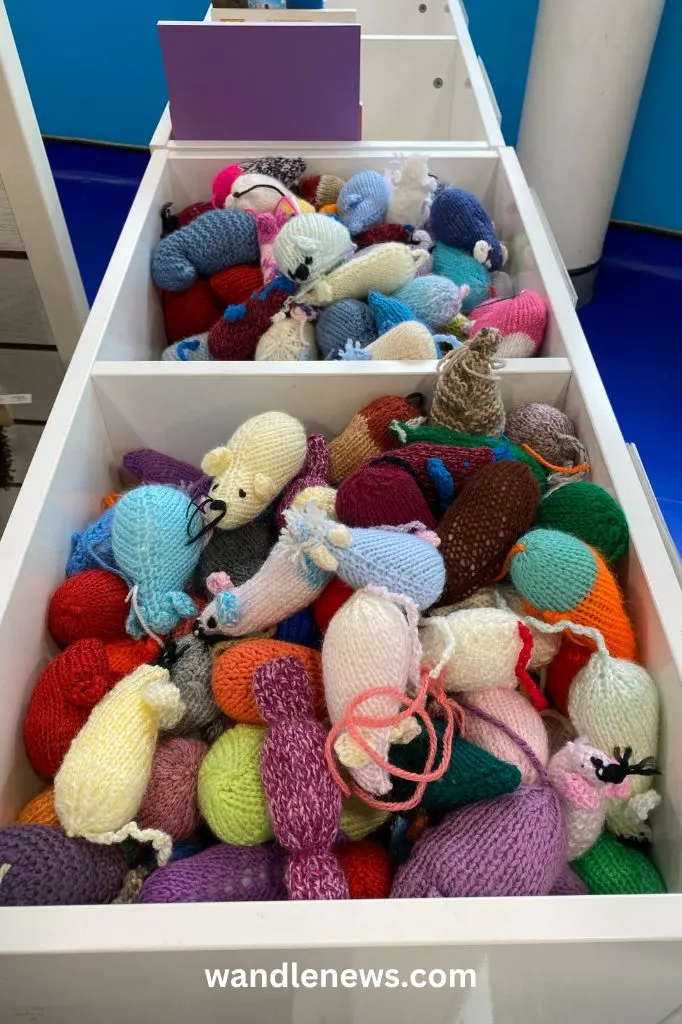

In the entranceway to the cattery there were cat beds for sale, a cat library, and cat toys. There was also a sign reminding visitors to be quiet because the cats were sleeping.
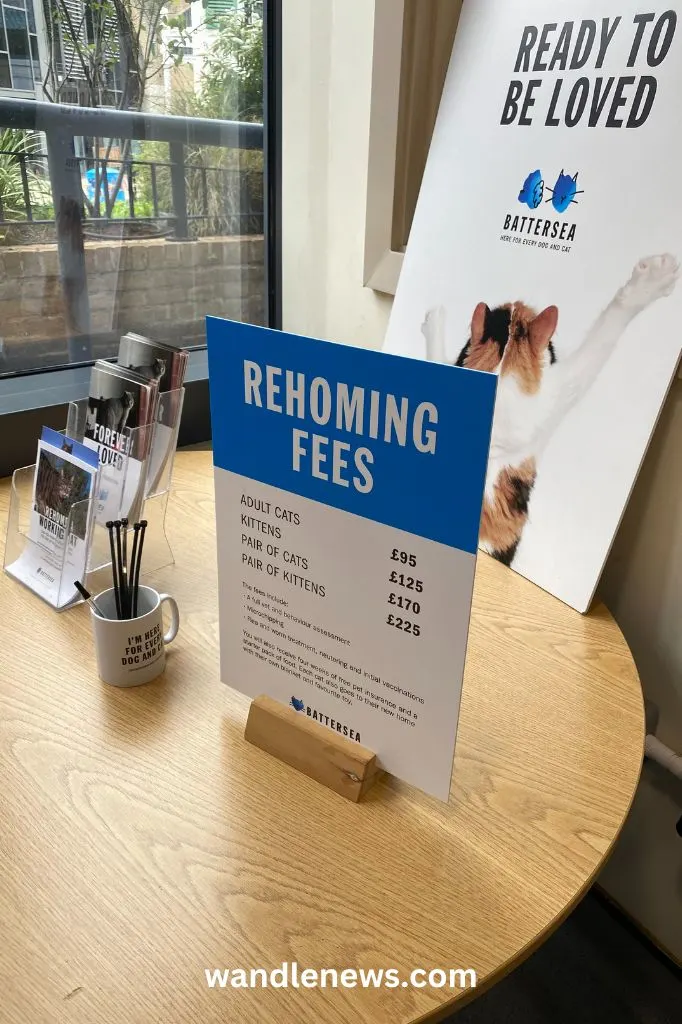
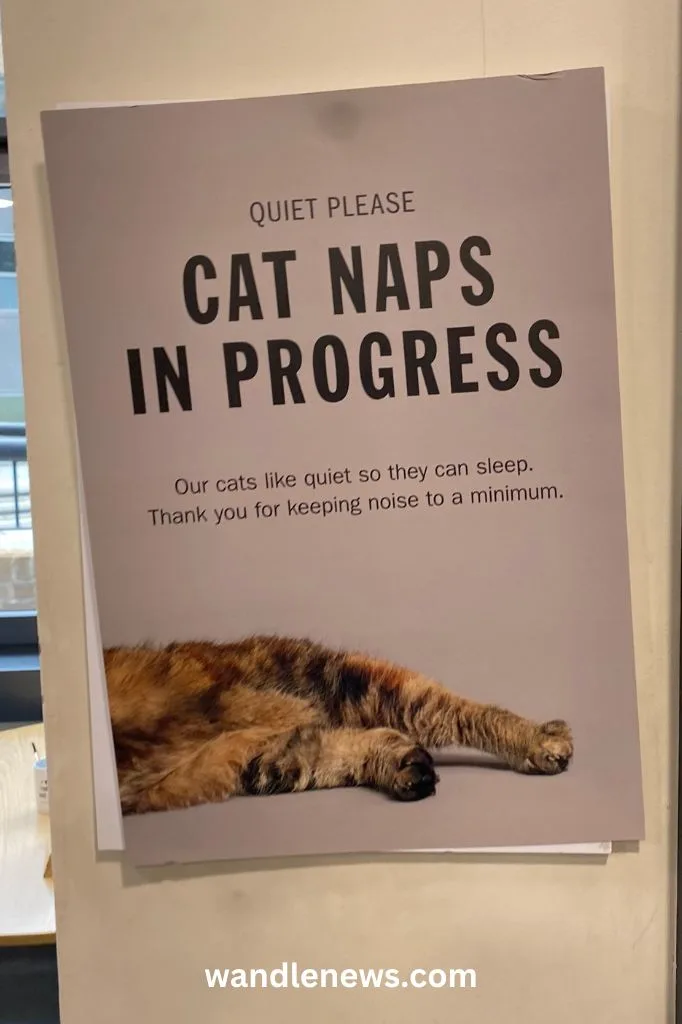
Heritage Exhibition
The last stop before the tour ended was the heritage exhibition. This is a small exhibition about the history of Battersea Dogs and Cats Home. It had old photographs, and newspaper articles about the rescue centre as well as a video about the dogs and cats.
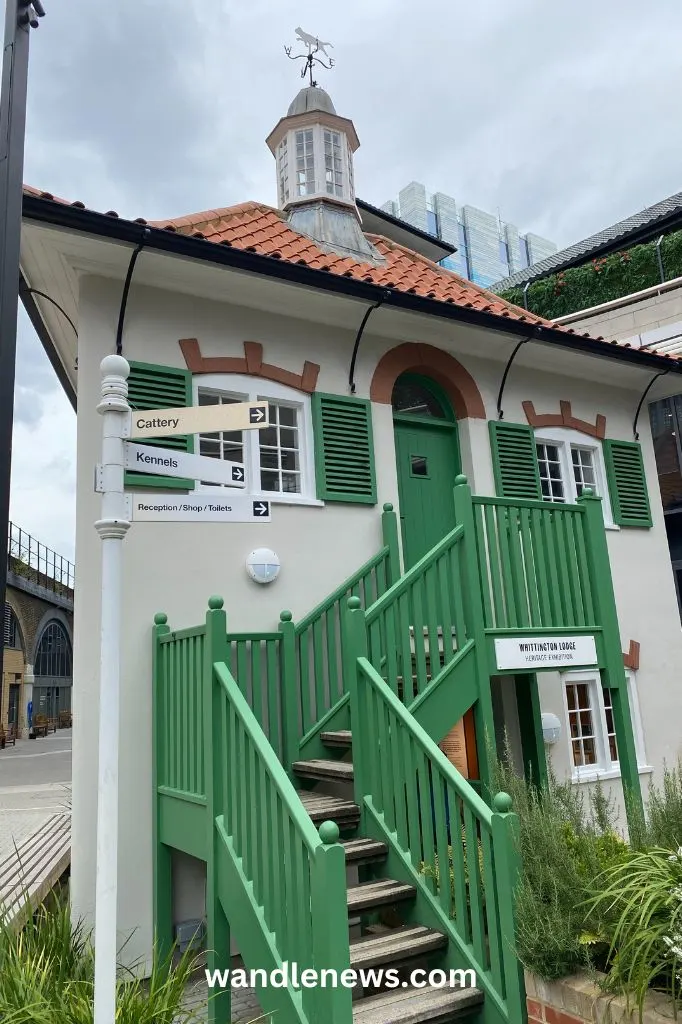

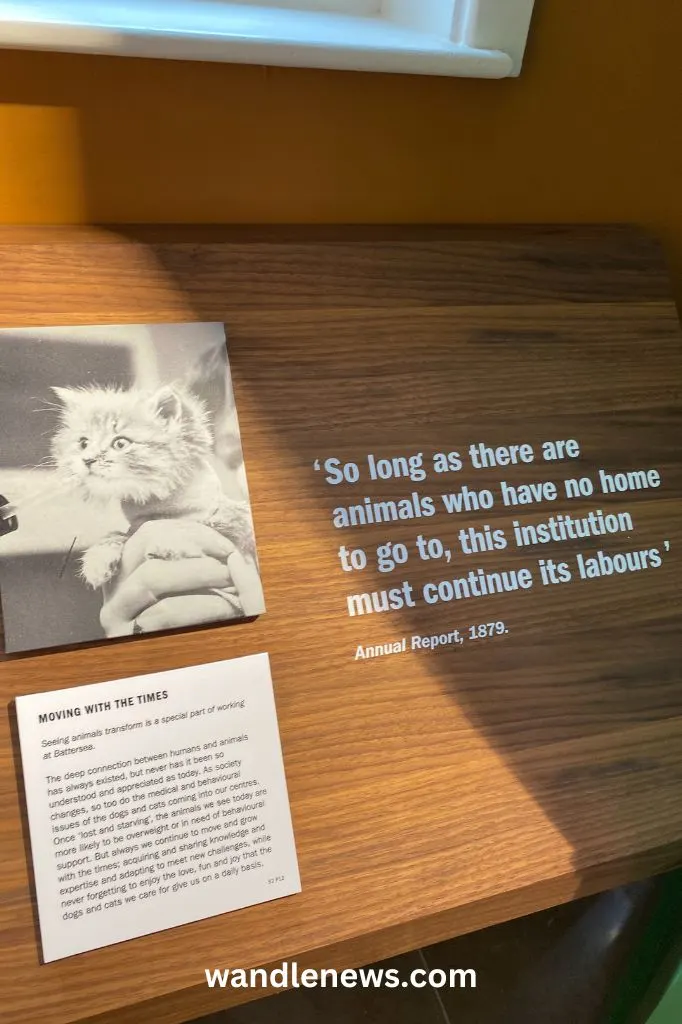

How to Book a Battersea Dogs Home Tour
If you want to book a guided tour of the home, this can be done on Eventbrite. I was lucky to be able to get a ticket, because there are only 12 places available on each tour, and they sell out very quickly.
At the moment the next tours which include the cattery aren’t available until November. When I bought my ticket, I was told that the tour would be 45 minutes – 1 hour. It ended up being well over an hour, and we didn’t even see the cats, so I think it depends on your tour guide on the day.
When I visited, my ticket cost £12.22, which I thought was very good value for money.

This post was my review of the Battersea Dogs Home Tour
Thank you for reading my review of the Battersea Dogs Home tour. If you have been on a tour yourself, please leave me a comment below and let me know what you thought.
Check out my other posts on Battersea.
